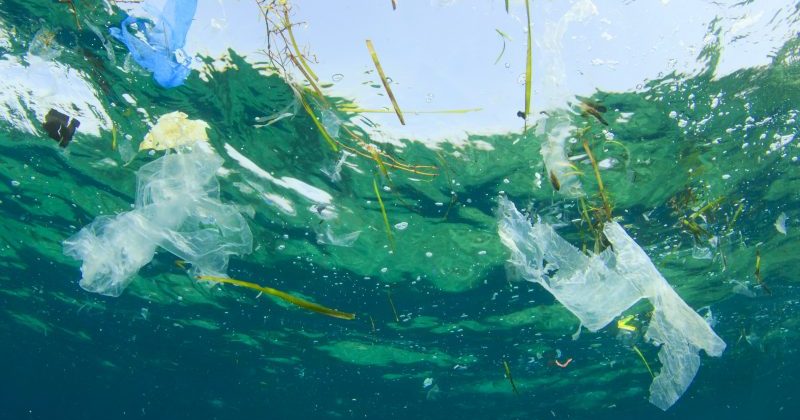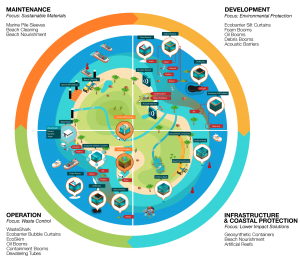
Arab News reached out to Ecocoast a couple of weeks ago for commentary on marine pollution. The following is the first part of a 3-part blogpost on marine pollution, of which sections were first published on Arab News dd. October 3, 2018. See Arab News feature here.
What is your method in cleaning up oceans and why is it so effective?
Cleaning up our marine environment is a multifaceted and complex issue that needs to be approached from a number of angles. Marine pollution is not just caused by plastic and packaging waste, but from a range of activities as a result of coastal development, such as construction and industrial activities.
At Ecocoast, we provide a portfolio of pioneering solutions that protect and support our marine environment, to reduce the impact from coastal and marine activities, construction, land reclamation works and other developments. Our solutions cover every stage of the coastal development cycle, from development and infrastructure through to operation and maintenance, in order to avoid detrimental ecological impacts.

Silt curtains, containment booms and sand-filled geosynthetic containers are just a few examples of materials that offer protection to the marine environment against particular types of impacts resulting from coastal development.
We are the largest manufacturer of silt curtains in the world, which are used to protect the marine environment during marine construction and coastal reclamation works. In Dubai alone, the coastline has grown by over 6% since 2009 because of dredging and reclamation, making the use of marine protection barriers a very important part of protecting our oceans.
Our work with The Ocean Cleanup tackles the issue of ridding the world’s oceans of plastic. At the end of 2017, Ecocoast partnered with The Ocean Cleanup to design and manufacture the screen for their Great Pacific Garbage Patch (GPGP) ocean cleanup. We can proudly say that we were the first to develop a successful screen for The Ocean Cleanup. Our R&D and Engineering expertise informed the development of this groundbreaking screen. The world’s first ocean cleanup system was launched on September 8, 2018. The Ocean Cleanup’s goal is to cut the GPGP by 50% in 5 years’ time from full scale deployment.
With our latest launch, we are tackling the problem at the source. WasteShark intercepts plastic, rubbish, algae and other floating debris before it enters the ocean. This waste and data collection vehicle can collect up to 350 kilograms of rubbish (or 180 liters). Once full, it will carry the rubbish to shore, where it can be recycled.
WasteShark also plays an important role in the field of environmental monitoring. Up to 256 different data sensors can be added at any one time to continuously gather data and monitor changes in the environment. The marine environmental monitoring system can help control water pollution by for example tracking oil leaks.